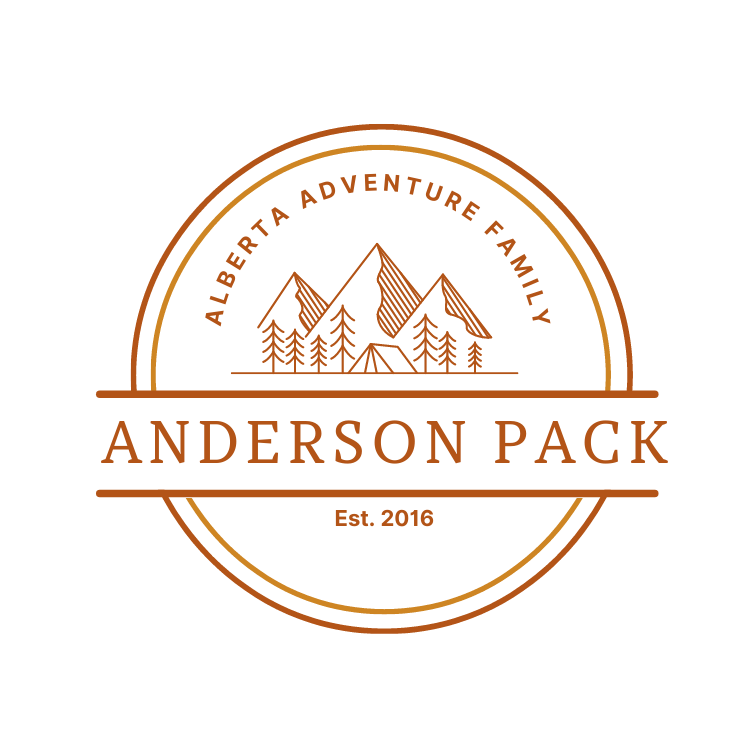Our Top Ten Backpacking Must-Haves
by Jared Anderson & Taffin Evans
Waterton Lakes National Park, Alberta
Backpacking is one of our favourite activities to do (all-year round!) so we’ve narrowed down our top ten must-haves for every trip!
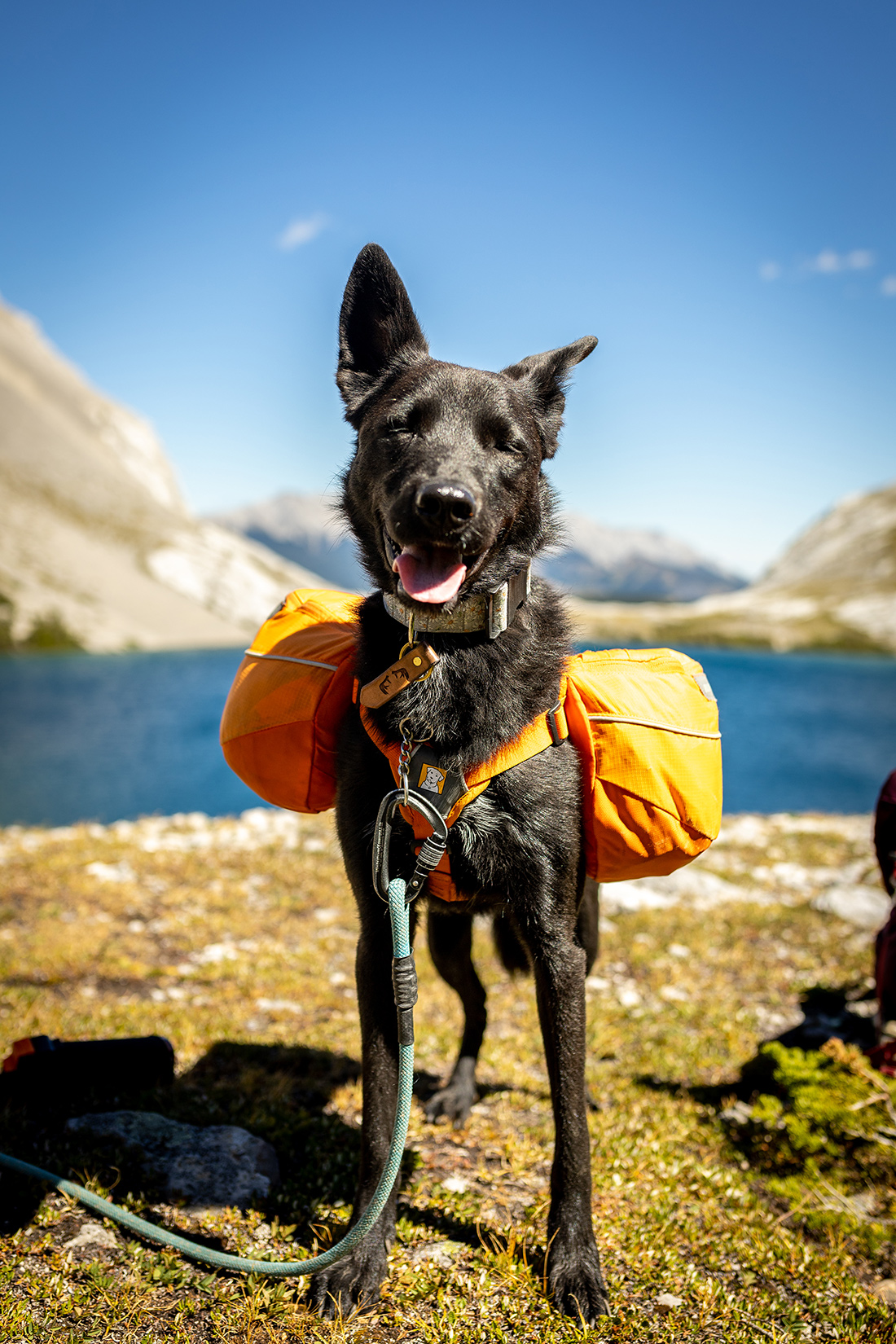
Kananaskis Country Public Land Use Zone, Alberta
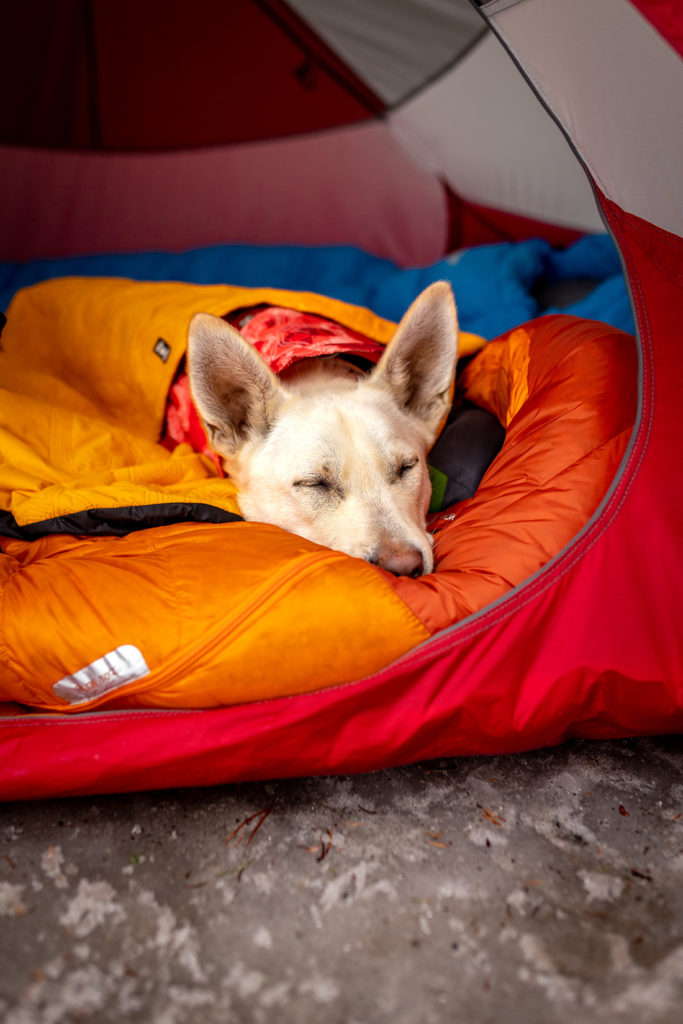
Bow Valley Wildland Provincial Park, Alberta
Top Ten Must-Haves for Every Backpacking Trip:
1) A good backpack: If you don’t have a backpack that is comfortable and fits you well, then your backpacking trip is not going to be very fun. Your backpack should sit on your hips, with the ability to loosen or tighten the straps to the top part of your bag. This allows you to move the weight of the bag from your shoulders to your hips, or vice versa, throughout your hike in. We love our Gregory Packs–Jared has the Baltoro 75 and I use the Deva 70.
2) In addition to a good backpack, you should also have good hiking boots: When selecting a hiking boot, you can consider a couple things like material, waterproofness and height, to name a few. We both love our Zamberlan boots. Jared runs the 960 Guide Gore-Tex RR and I have a pair of 996 Vioz GTX. These boots work for us because they provide ankle support, are made of leather so they molded to our feet quickly and are waterproof, and they are super comfortable to wear for 20+km days!
3) A satellite communication device: Is so important to have when exploring the backcountry. We use the Garmin InReach Mini–it has the feature to be able to text through the app, so your loved ones know when you make it to camp! We frequently use it to communicate with our parents when we’ve arrived, when we’re going to bed and when we get up in the morning.
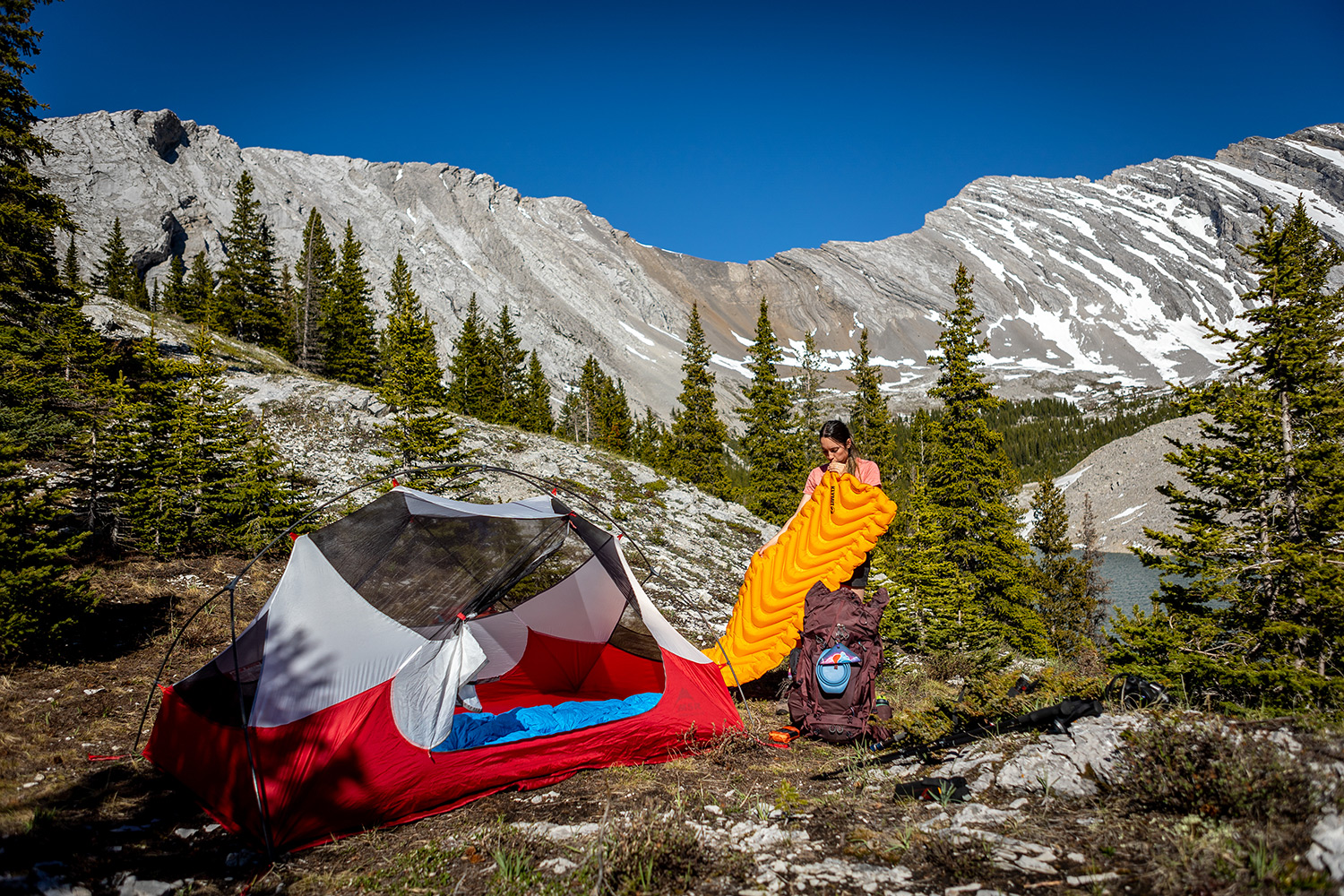
Elbow-Sheep Wildland Provincial Park, Alberta
4) A (preferably lightweight) tent: We totally understand that gear is expensive and you may not be able to afford ‘top of the line’ gear when starting out, which is totally okay! As long as you have a tent that fits you, and whoever your with, and will keep you dry and out of the elements, you’re good to go. There are also 3-season and 4-season tents; 3-season being able to withstand rain, wind and some cold weather, whereas 4-season tents are built for everything else, like snow. We do prefer to keep our gear as compact and lightweight as possible, so we use the MSR Hubba Hubba 2-person tent. It fits us and the two dogs snugly, which is great because there’s less space for us to warm up!
5) A comfortable sleeping pad: If you’re like us and prefer to random camp (aka, no tent pads) then there might not always be the most flat/rockless spots when you’re setting up camp! Having a good quality sleeping pad that keeps you comfortable, and warm, will make your adventure that much more enjoyable. We each have a Klymit sleeping pad which are inflatable but pack down really small, so they aren’t super heavy and don’t take up a ton of space in your bag.
6) A weather-appropriate sleeping bag: Similar to tents, you can get different ratings of sleeping bags based on what type of camping you want to do. There are typically summer (warmer than 0C), 3-season (-1C to -15C), and winter sleeping bags (colder than -15C). There are also different fills, like synthetic versus down, and different shapes. We both have down mummy-shaped bags that are rated for 3-season camping.
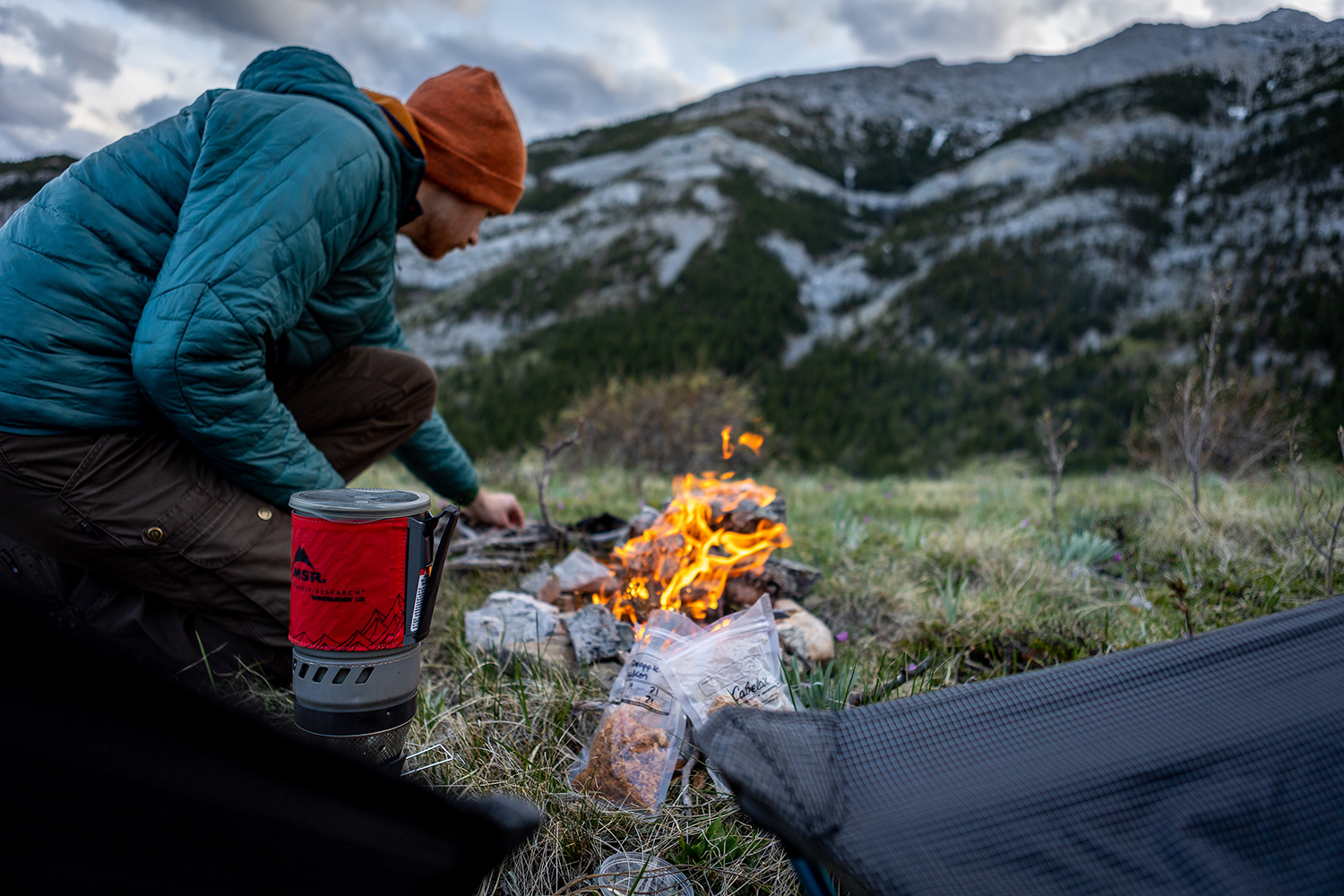
Kananaskis Country Public Land Use Zone, Alberta
7) Water bladders and filtration systems: During warmer months we each have a water bladder so we don’t have to stop every time we want a drink (game changer, if you don’t already have one–for camping or hiking!). But we always bring water bottles for the dogs to have drinks during the hike. If we know we’re camping somewhere that has access to a water source–a lake or a river– we don’t pack in extra water, if we don’t know if there’s water, we always bring way more than necessary, cause it’s better to have too much than run out! We also bring a water filtration system, and water purification tablets, to ensure we have clean drinking water! We love our Sawyer filters because they are compact and easy to use.
8) Compact stove: We use the MSR WindBurner stove and it’s fantastic! It heats the water quickly, works well–even if its windy–, and it packs down nice and small so it doesn’t take up a ton of room!
9) Food and snacks: We are both those people who get ‘hangry‘ when they are hungry, so we’re always prepared with lots of snacks and food when on the trails! We particularly love to make our own dehydrated meals (stay tuned for a blog about that!), but we also bring snacks like beef jerky/pepperoni sticks, Pringles (your chips don’t get crushed and it doubles as a garbage container!), dried fruit, and trail mix. You want to make sure that you bring enough high-calorie items to refuel your body after the hard work to get to your backpacking spot!
10) A first-aid kit: This is such an important thing to include in your bag, no matter the activity! We always have a first aid kit with us on day-trips, backpacking, fly fishing, trailer camping, etc. In case something happens, we want to be prepared. We have the staples most pre-made kits include (bandaids, cleaning wipes, safety pins, gauze), but we also include things for the dogs like Coban tape (tape that sticks to itself and not the dogs fur), and also a dog carrying harness–in case anything happens to them and we need to carry them out! Obviously you can customize your first-aid kit to your liking, but it’s definitely an important item to include.
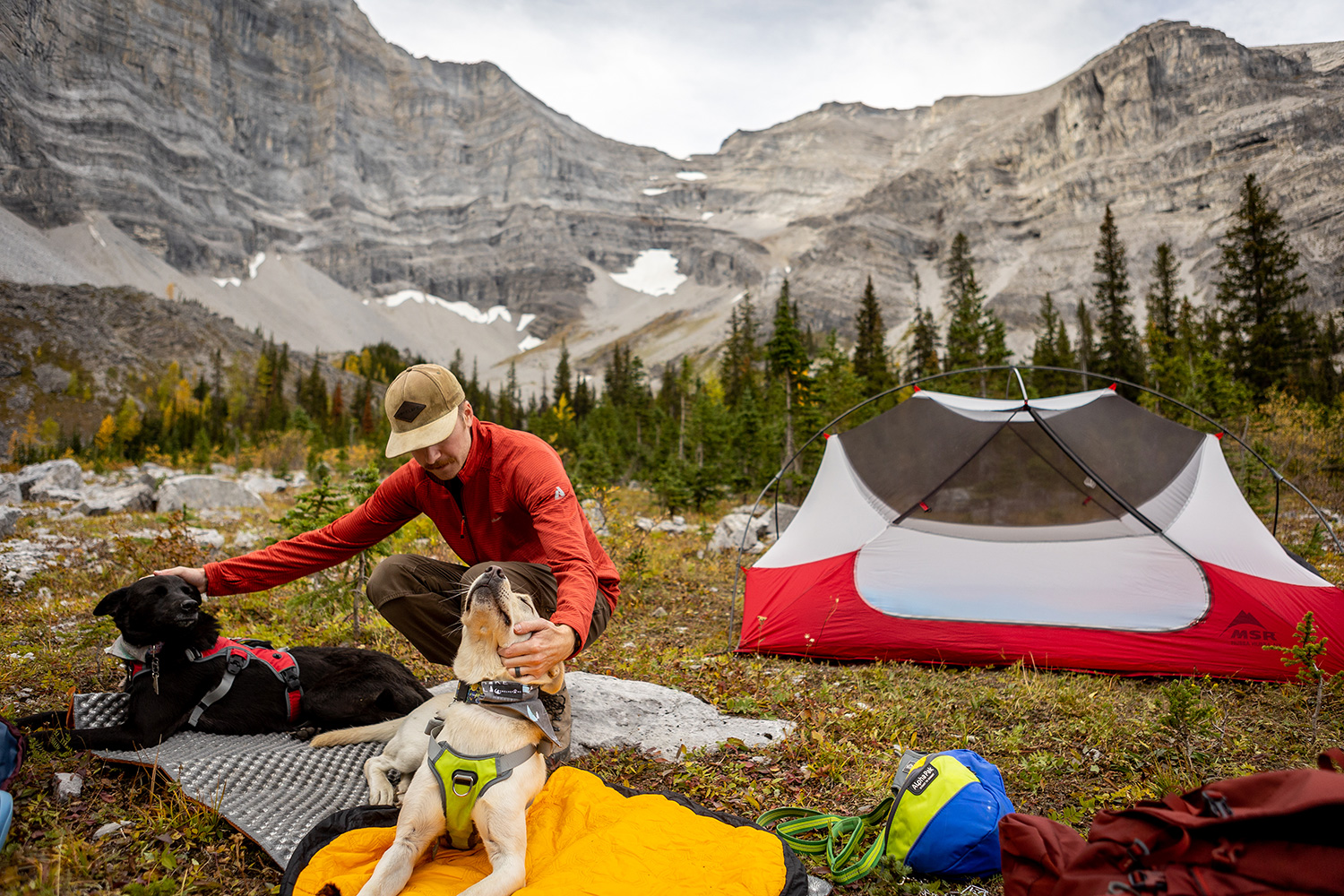
Bow Valley Wildland Provincial Park, Alberta
A Couple Honourable Mentions We Always Have Too:
- Packable down jacket and rain jacket–you never know what Mother Nature is going to bring, and we always like to be prepared!
- Small, lightweight packable chairs. These are amazing to have, especially when camping on crown land and there aren’t tables/benches available.
- Fire starter. Even during the summer, when the sun goes down, it can get cold! It’s always nice to have a warm fire to sit around–however, make sure you’re aware of any fire bans happening in the area you’re camping.
- Good base layers! As we’ve mentioned a couple times, it can still get cold over night, even during the summer, so we always pack a good base layer for sleeping to keep us warm.
- Cribbage board and waterproof playing cards. There’s nothing we love more than enjoying the Rocky Mountains with a fire and a good game of crib.
- Warm, adult beverages. We love bringing mugs with apple cider and whisky pre-mixed and just adding hot water to enjoy after dinner.
What's something you can't live without in the backcountry?!
Is there something on your packing list you always bring and we didn’t include? Send us a message–we would love to hear what it is!
We’re always looking for how to make our backcountry experience the best it can, and love learning about new items or tricks to make that easier.
We also totally recognize that while these might be our essentials, they might not be essentials for everyone else, which is totally cool too! We simply want people to be able to get outdoors and enjoy nature, while being safe for themselves and the wildlife and enivronment around them.
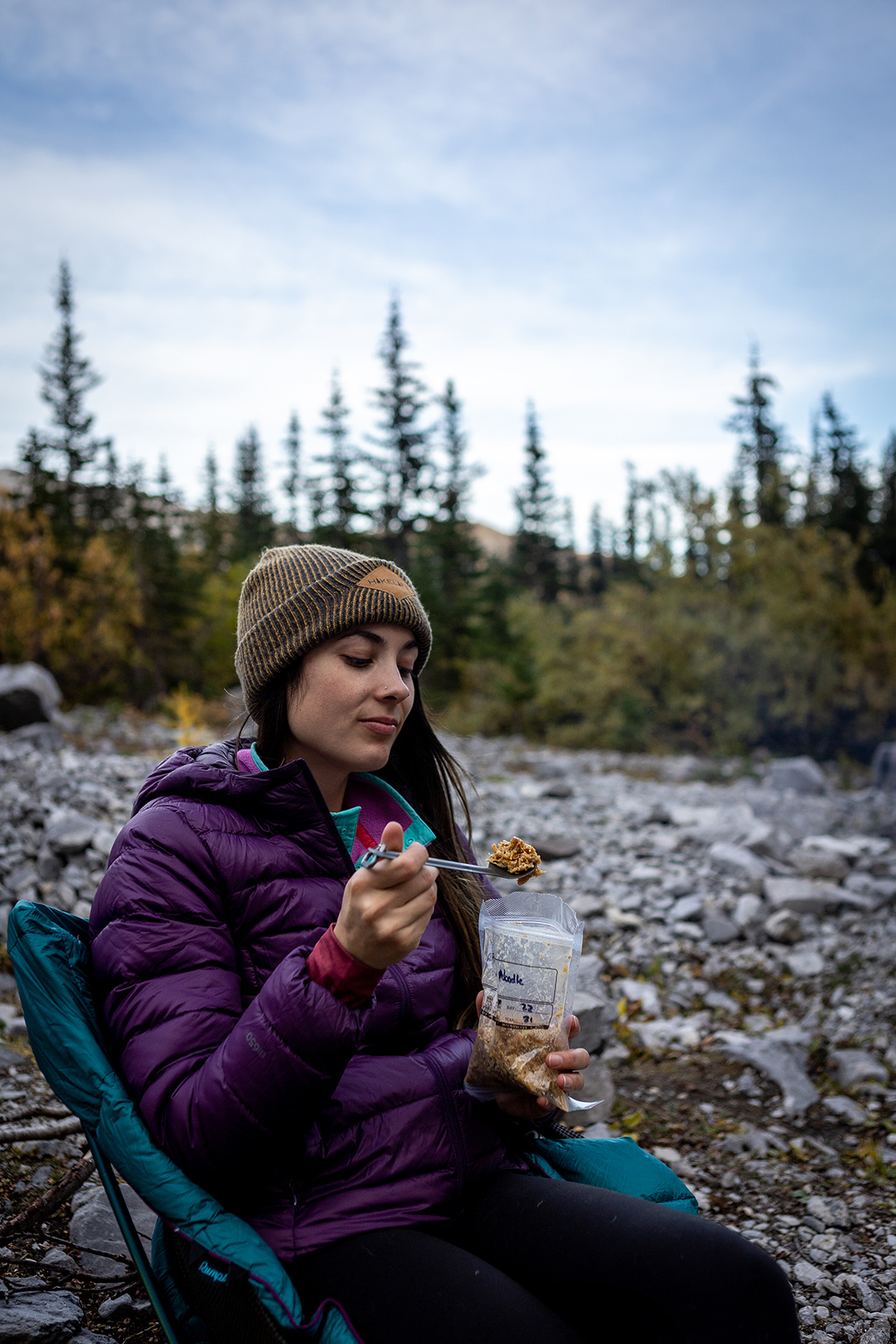
Bow Valley Wildland Provincial Park, Alberta
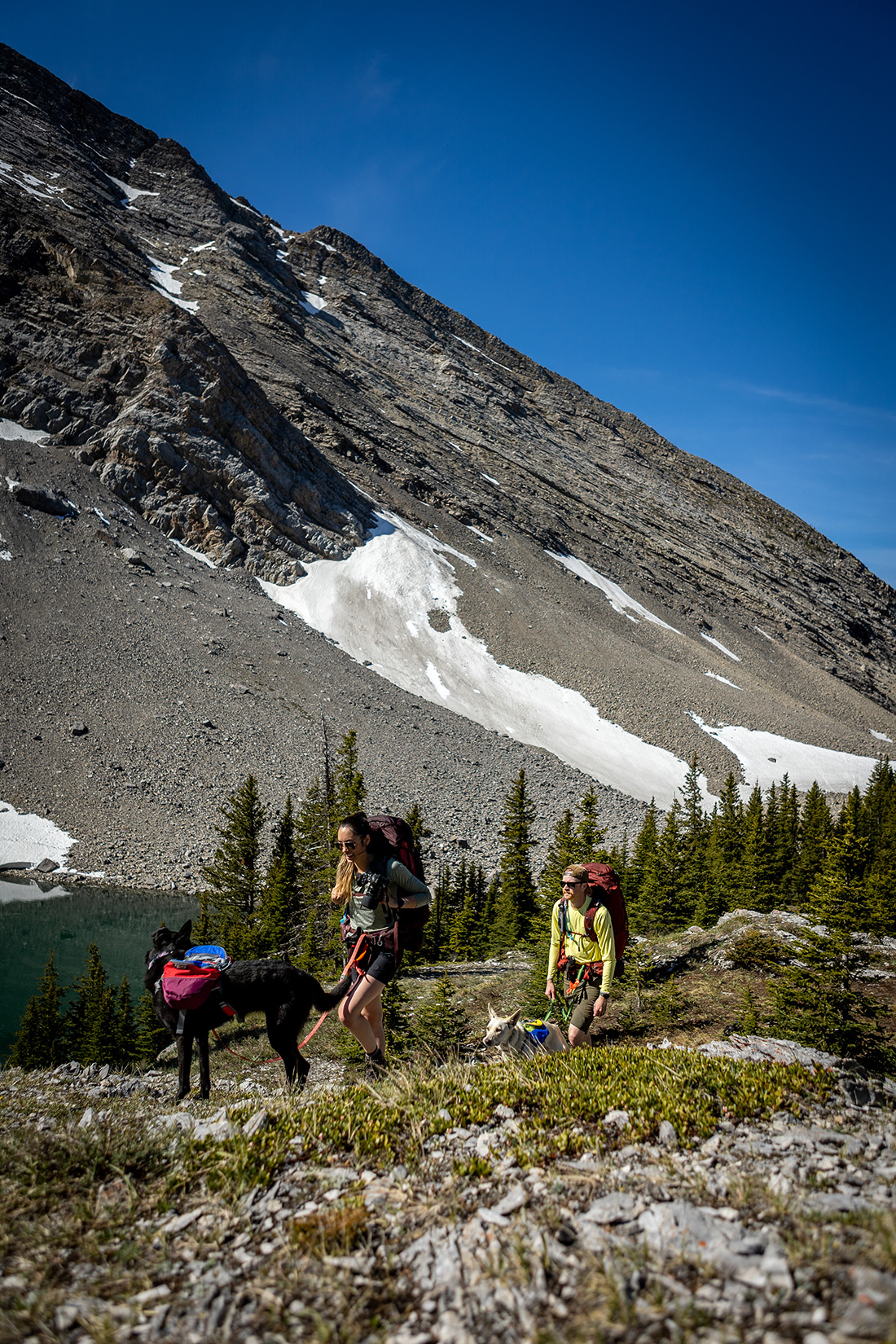
Elbow-Sheep Wildland Provincial Park, Alberta

Elbow-Sheep Wildland Provincial Park, Alberta
